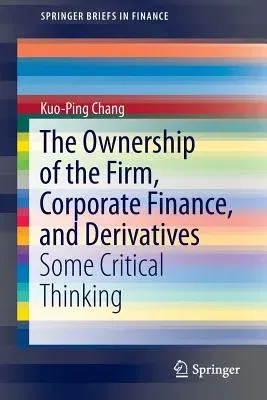Kuo-Ping Chang
(Author)The Ownership of the Firm, Corporate Finance, and Derivatives: Some Critical Thinking (2015)Paperback - 2015, 16 January 2015

Qty
1
Turbo
Ships in 2 - 3 days
In Stock
Free Delivery
Cash on Delivery
15 Days
Free Returns
Secure Checkout
Part of Series
Springerbriefs in Finance
Print Length
76 pages
Language
English
Publisher
Springer
Date Published
16 Jan 2015
ISBN-10
981287352X
ISBN-13
9789812873521
Description
Product Details
Author:
Book Edition:
2015
Book Format:
Paperback
Country of Origin:
NL
Date Published:
16 January 2015
Dimensions:
23.39 x
15.6 x
0.48 cm
Genre:
Economic
ISBN-10:
981287352X
ISBN-13:
9789812873521
Language:
English
Location:
Singapore
Pages:
76
Publisher:
Series:
Weight:
136.08 gm

